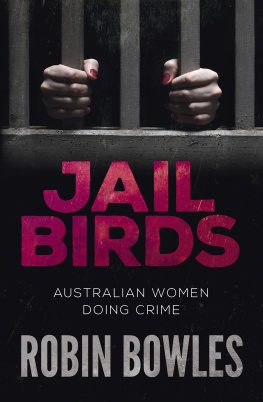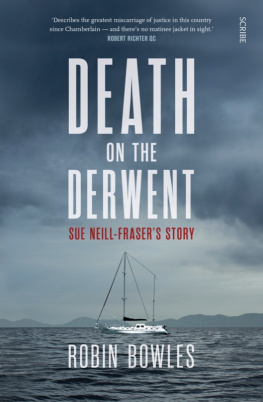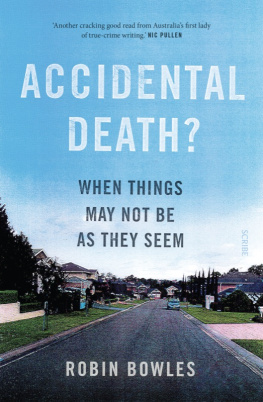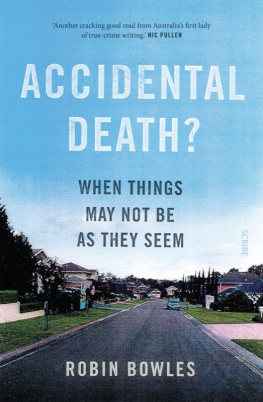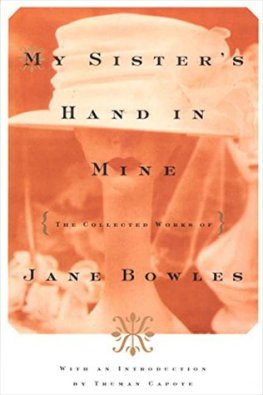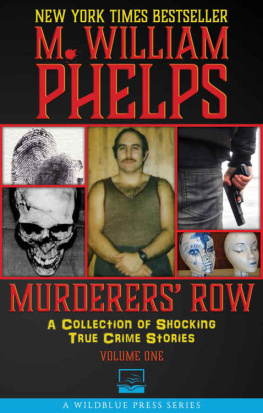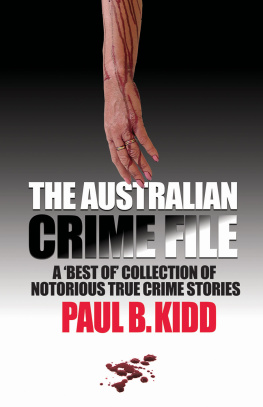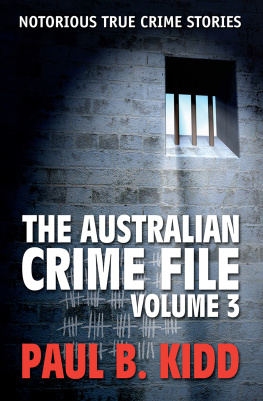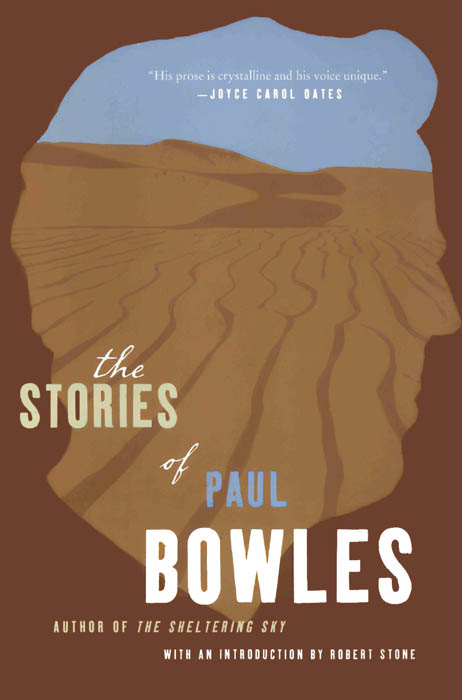For Sarah, whose courage, dedication and unshakable faith in her mothers innocence have never wavered
Introduction
Jail Birds
What drives a woman to smuggle drugs, break a prisoner out of jail, or commit a crime as serious as murder? How can someone who has led a totally unexceptional existence find herself suddenly ducking and weaving to dodge the media and police? Dont be fooled that it could never happen in your family or community, because it can happen to anyone anywhere.
Ive met most of the women whose cases are discussed in this book, and Ive had long phone conversations with another. All of them are ordinary. None of them would turn your head if they passed you in the street. Almost all of them have been married and had children. Theyve worked in unremarkable jobs and lived unremarkable lives, until the day when everything changed. And when it changed, it changed not only for them, but also for everyone they knew.
First among the victims are the women themselves. In a moment, theyre exposed to the glare of publicity, the relentless pursuit of information by police and the media when a crime has been committed. The quest is especially persistent when the accused is a woman. In an era when people can comment in an instant on social media or vent their prejudices on talkback radio, theres often an immediate, hostile reaction when a woman is accused of committing a crime. In law, people are innocent until proven guilty, but the court of public opinion is governed by different rules, and tends to move straight from suspicion or accusation to condemnation and guilt. Theres an element of double jeopardy here: as in the medieval witch trials, the accused woman is guilty if she sinks, because otherwise God would save her, and guilty if she floats, because the devil must be helping her.
How far have we really come from those days? In many cultures, something doesnt seem to sit right when a woman commits a serious crime, because a woman is seen as going against her natural instincts to care and nurture. Whether a crime is premeditated, the product of careful plotting and scheming, or is committed in the heat of the moment, we seem to judge similar crimes more severely if a woman commits them than if a man does exactly the same thing.
Prejudice and pre-judgement are especially influential when a court is considering circumstantial evidence. An accused person can only be convicted on circumstantial evidence if there is no other explanation for the sequence of events. All alternative explanations have to be ruled out. As Arthur Conan Doyle had Sherlock Holmes say, When you have eliminated the impossible, whatever remains, however improbable, must be the truth. Unfortunately, juries dont always see it that way.
Susan Neill-Fraser was convicted on circumstantial evidence. Hers is a celebrated story for all the wrong reasons. Here is a woman serving a 23-year prison sentence because she was accused of killing her partner and because she talked too much, helping police with their inquiries. If shed said nothing, admitted nothing, the police wouldnt have had a case. As it is, shes now in prison for her partners murder, despite the fact that there was no body, no cause of death, no murder weapon, no motive, no witnesses and no confession. No nothing, actually, except a missing man and a woman who told stupid lies, which the prosecutor was able to massage into evidence of guilt.
Sue was a member of Tasmanias establishment, but now shes been consigned to a government establishment, possibly for a long time. I say possibly because she has a tireless team of supporters outside prison working on her behalf. In November 2015, they succeeded in having the Tasmanian government change the laws about appeals in their State. This may give Sue another crack at freedom, as she has exhausted all the traditional avenues of appeal.
The evidence against Tania Herman was far more persuasive. In fact, shed pleaded guilty to attempted murder and an array of related charges. Tania gained Australia-wide notoriety as the lover of a man called Joe Korp, who persuaded her to lie in wait for his wife, Maria, as she left for work, and strangle her. It didnt quite work out that way; Tania only succeeded in making Maria unconscious, at which point she stuffed her into a car boot and abandoned her, still living, to suffer alone for four days.
I first heard that Tania wanted to tell her side of the story after I met her lawyer at a function. It was the first time that Tania had told her story outside a courtroom. The lawyer told me that Tania had been very upset about a TV movie purportedly recreating the dramatic events that had landed her in jail. She said the telemovie was full of errors. For example, it showed her as being friends with Maria before she killed her, which was wrong. Tania was concerned that her two daughters, who were estranged from their mother at the time, would see this movie and be persuaded to believe stories about her that were even worse than the truth, which was bad enough. She was keen to talk to me and have the real story told.
Tania was warm, friendly, very remorseful and accepting of her punishment. When I first met her, she was six years into her nine-year non-parole period and said she was now on the home run. Shes a person youd befriend, trust with your kids, or go to a movie with. So why did she do such a terrible thing? Her explanation is that Korp had played on all her fears and illusions to persuade her that Marias death was the only way for them to be together. By the time she saw through his deception, it was too late.
Lucy Dudko was another young woman led astray by passion. Of Russian extraction, she was living in Australia in the midst of a failing marriage when she fell for a loveable, knockabout bank robber called John Killick. He helped her move out of the family home, and for eighteen months they lived together, constantly on the run, until John was nabbed robbing a bank and jailed in Sydneys high-security Silverwater prison.
Lucy soon decided she couldnt bear to live without him. With amazing panache and coolness, she hijacked a helicopter while ostensibly on a joyride, forced the pilot at gunpoint to land in the prison exercise yard, collected John, who had been alerted to be on standby, and spirited him away from among his gobsmacked fellow prisoners. Most of the guards were too scared to fire in case they hit the pilot and brought the chopper crashing down on top of everyone. So John and Lucy were again on the run.
It was Lucys first offence, and it would be her last. After 46 days of freedom, the runaways were tracked down and arrested at a caravan park on the outskirts of Sydney. Lucy was sentenced to a maximum of ten years in Mulawa womens prison. She was released in 2006, after seven years. She rediscovered religion in jail and is now living a quiet life on her own. But the authorities are still taking no chances. When John Killick finally obtained parole at the beginning of 2015, his parole conditions specified that he mustnt contact the woman whod tried to spring him more than fifteen years before.
A lot has been written about the Bali Nine, but not much of it has been sourced on a mobile phone direct from Kerobokan prison. The inmate who spoke to me from the prison is Renae Lawrence, a suburban girl from Newcastle in New South Wales who became caught up in one of Australias most widely publicised drug-smuggling events. While the media focused on Schapelle Corby, whod been convicted in Bali after marijuana was found in her luggage, no-one was interested in Renae Lawrences story. One member of the media described her to me as that ugly, fat lesbian. These days, it seems, even criminals arent of interest unless theyre attractive, slim and heterosexual.

